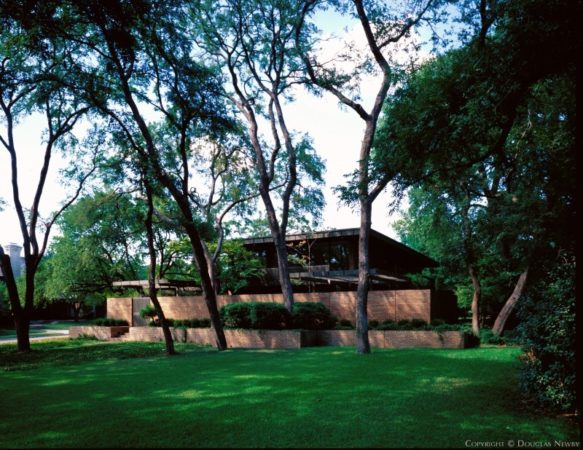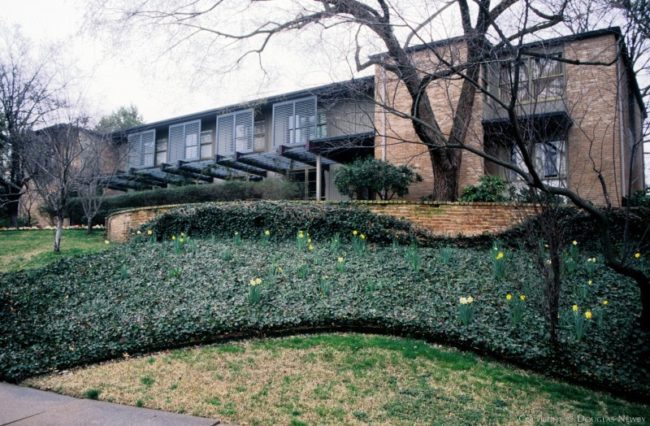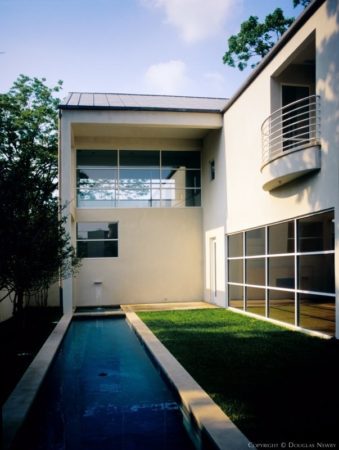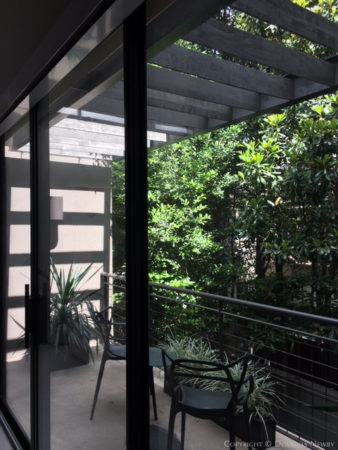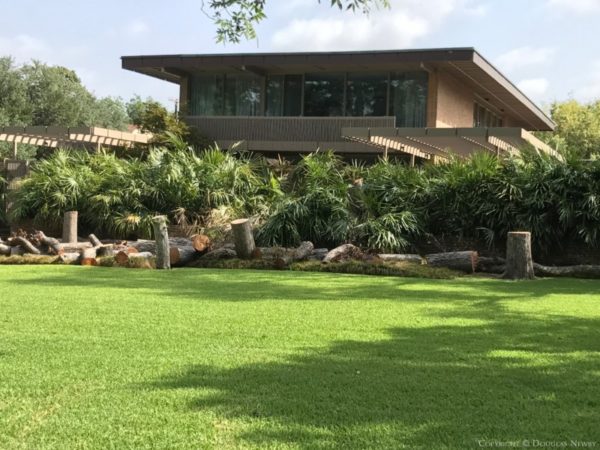
E.G. Hamilton, FAIA, died May 8, 2017, at age 97, preceding the death of the architecturally significant home he designed at 3616 Crescent Avenue in 1963.

Just as a parent should never have to lose a child before their own life has ended, an architect should not have to live through the death of one of the homes he or she has designed. E.G. Hamilton almost had to live through that indignity 20 years ago, when still in the prime of his career, 3616 Crescent was about to be demolished.
Slow Death of Modern Home
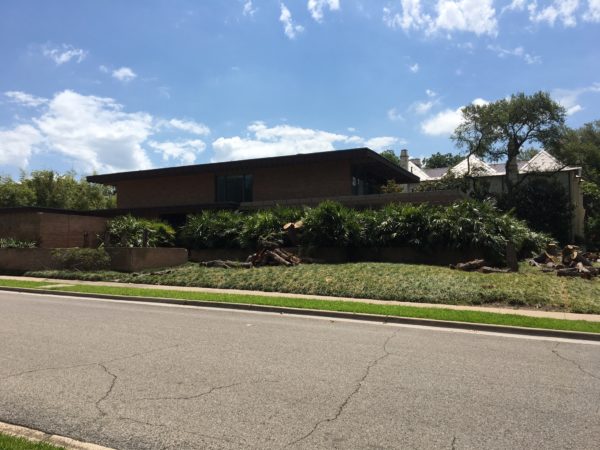
As renovating architect of this awarding winning architecture, Svend Fruit, wrote me with this photograph, “they not only hate modern architecture, they hate trees.”
The demise of this architecturally significant home that made such a positive impact on Dallas and modern architecture does feel like a death by a thousand cuts.
My Introduction to an E.G. Hamilton-Designed Home
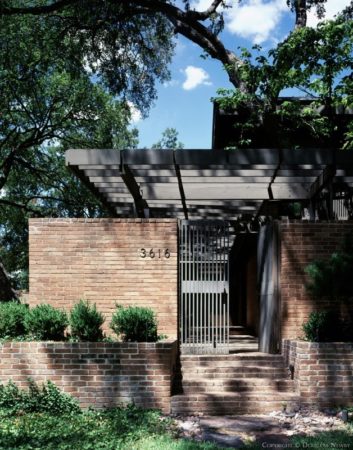
My first real recognition of E.G. Hamilton as a residential architect came when I was going through the home he designed at 3616 Crescent Avenue, on the corner of Alice Circle in Highland Park. The home was identified as one of Dallas’ 50 Significant Homes as part of the celebration of the Dallas Chapter AIA’s 50th anniversary. Even before the home was renovated it had a graceful warmth and modernity.
E.G. Hamilton House Saved 20 Years Ago
It was 20 years ago when I was at 3616 Crescent looking at potential shots to photograph at this architecturally significant home that had been selected as one of the AIA 50 Significant Homes when the new buyers of the home came to the house straight from the title company. It was then that I found out the home was going to be torn down.
When I asked the new owners what their plans were for the house they said they were going to build a new home on the lot. Immediately, I said to them you can’t do that as it’s an E.G. Hamilton-designed home. When they asked who E.G. Hamilton was, I said he was an architect in the importance and company of O’Neil Ford and Frank Lloyd Wright.
To their credit, these buyers did some research and without any fanfare purchased another lot and sold the E.G. Hamilton-designed home to a couple who would renovate it.
Svend Fruit, AIA, and Mil Bodron Designed Modern Renovation of Home
This modern home at 3616 Crescent is now beautifully renovated. Bodron+Fruit created the design that retained the modernity of the 1960s and introduced a rejuvenated modernity to this mid-century home. This modern home has received awards, accolades, been featured on home tours and has been an extraordinary example of a period home with enduring modern appeal.
After Millions Spent on Renovation, Wrecking Ball Looms
Twenty years ago, the goal was to find someone to restore the home and then the architecturally and historically significant home would be preserved for posterity. That is not the case now. The home sold again in early 2017 and the new owners have demolition plans for the home.
The fact that a modern home designed by a great architect, E.G. Hamilton, after millions of dollars have been spent on renovating it is another example of why historic and architectural preservation is at an all-time low in Dallas.
This E.G. Hamilton home on Crescent will become part of a trio of Highland Park architecturally significant homes torn down in the last six years, including: the Scott Lyons-designed modern home on Lexington and the modern home on Armstrong designed by O’Neil Ford.
Scott Lyons-Designed Modern Home Torn Down 2011
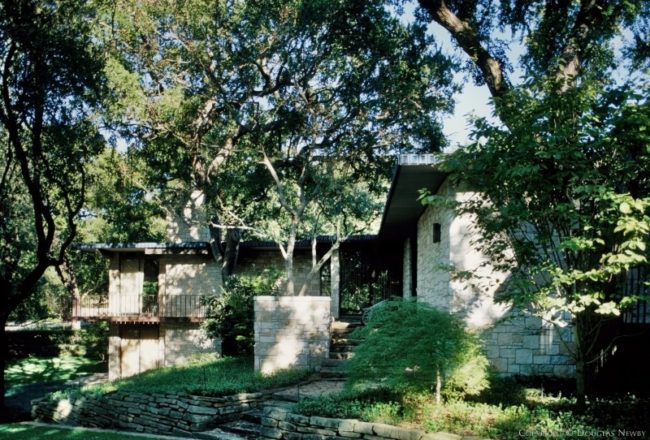
This significant modern home, designed in 1958, was designated by the Dallas AIA as one of the 50 significant homes for their 50th anniversary.
Important Modern Home by O’Neil Ford, FAIA, Demolished
An architecturally significant Texas Modern home at 3756 Armstrong Avenue designed by O’Neil Ford was recently torn down to speculatively resell the vacant land.
These two, and now the home on Crescent, were all large homes with tall ceilings, perfectly sited on beautiful corner lots overlooking parks and creeks. If these three architecturally significant homes are torn down, what modern period homes in Dallas can be saved?
The Modern Home at 3616 Crescent in Highland Park is Next
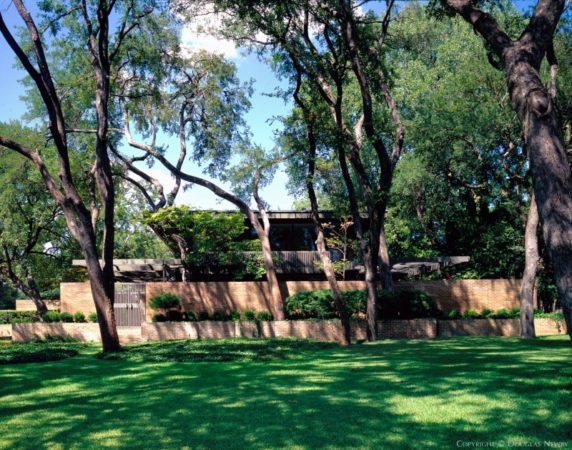
This period modern home, designed by E.G. Hamilton in 1963, was designated by the Dallas Chapter of the AIA as an architecturally significant home for their 50th anniversary.
Modern Houses Can Be Torn Down But Architectural Lineage Lives On
Architecturally significant homes inspire good architecture. Also, great architecture inspires great architects. Even when a significant home designed by E.G. Hamilton is torn down, his legacy can be seen in other architects’ work.
Arch Swank, FAIA Inspired E.G. Hamilton, FAIA
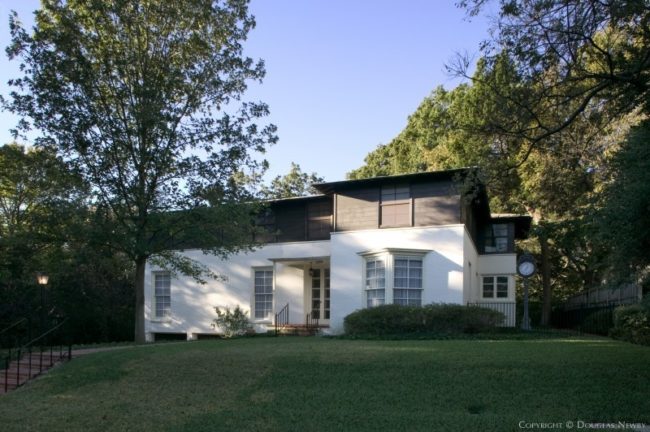
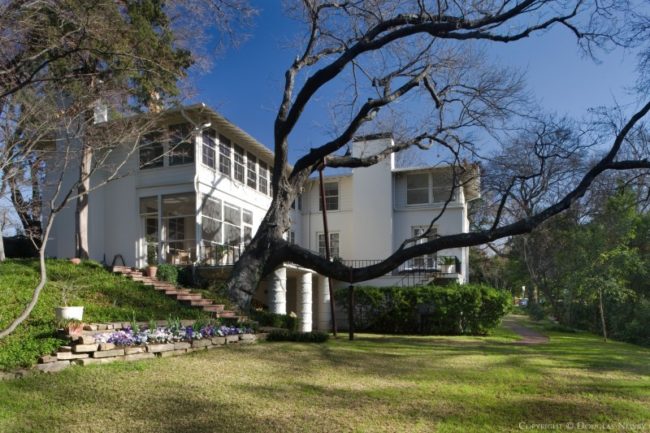
Modernist Arch Swank, FAIA, who was the honored guest at the AIA 50 Significant Homes Announcement Party, inspired E.G. Hamilton early in his career when he worked for Arch Swank, and 30 years prior to Hamilton’s design of the Highland Park home on Crescent Avenue. Arch Swank’s modern home that he designed in 1936 relates to the environment, with the structure wrapping around gardens the same as E.G. Hamilton’s design on Crescent.
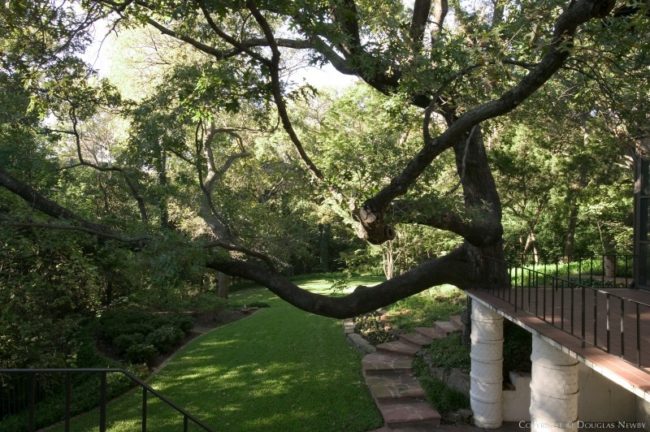
Lionel Morrison’s Highland Park Modern Home Evokes E.G. Hamilton
Twenty years ago, I was chairing AIA’s 50 Significant Homes project, I was looking at 3215 Princeton, a modern home Lionel Morrison, FAIA, had just designed while I was discussing with Lionel his residential work. At one point I told Lionel that the modern home on Princeton, despite it being on a narrow lot and being two-story, and stucco instead of brick, reminded me of the home E.G. Hamilton designed 30 years earlier in Highland Park at 3616 Crescent Avenue. Lionel Morrison looked at me with his eyes wide open in surprise and said he started his career working with E.G. Hamilton. Until that moment I was unaware that Lionel Morrison had started his career working for E.G. Hamilton. In addition, I think Lionel was unaware of how much of E.G. Hamilton’s influence had seeped into his work.
The balcony of the modern town house designed by Lionel Morrison continues in the tradition of architect Arch Swank and architect E.G. Hamilton.
E.G. Hamilton’s Influence is Seen in Robert Meckfessel’s Greenway Parks Modern Home
Another fine architect who worked with E.G. Hamilton early in his career, before he started his own firm, is Robert Meckfessel. In Greenway Parks, Robert Meckfessel, FAIA, designed a fabulous modern home at 5315 Wenonah that also embraces the environment and integrates the structure with the gardens in a way similar to the designs of Arch Swank and E.G. Hamilton.
Very Different Modern Homes, Very Similar Effect
Despite these all being very different homes from different architects and different eras, E.G. Hamilton’s tenets of Modernism and good design continue to be expressed in similar ways. He was relevant and influential when he was alive and still is today, even if he is now gone and the homes he designed do not survive.
Architectural Legacy Allows E.G. Hamilton’s Influence to be Celebrated and Continued
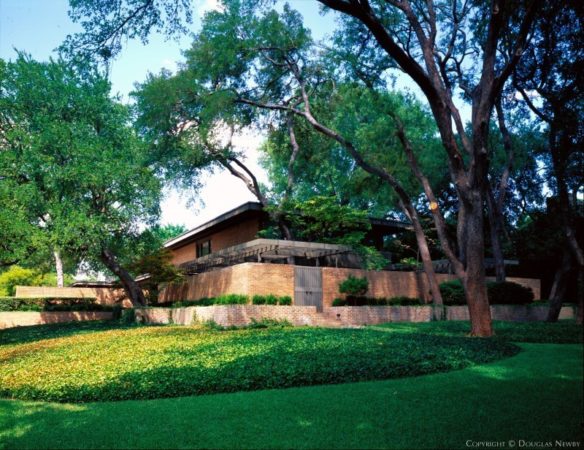
Understanding the architectural lineage of homes in Dallas helps architects design better homes and helps the rest of us to have a greater enjoyment of the architecturally significant homes across Dallas. E.G. Hamilton continues to inspire good architecture.
Architecturally Significant Homes


